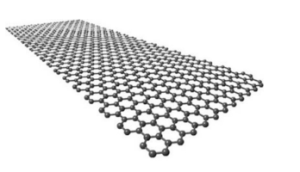Dec 15 2016
Fujitsu Laboratories Ltd has announced the world's first successful development of an exquisitely sensitive gas sensor based on a new principle that takes advantage of graphene, a material in which carbon atoms are arranged in a sheet one atom thick.
 Source: Fujitsu
Source: Fujitsu
This development paves the way for compact instruments that can measure specific gas components with speed and sensitivity, for detecting atmospheric pollution or testing for organically derived gases in a person's breath.
Fujitsu Laboratories has developed a gas sensor that operates on a new principle, in which the gate part of a silicon transistor is replaced by graphene. This sensor can detect concentrations lower than tens of parts per billion (ppb) of nitrogen dioxide (NO2) and ammonia (NH3); with nitrogen dioxide in particular, sensitivity has improved more than tenfold, to less than 1 ppb.
This technology is expected to enable real-time measurements of air quality, which may have taken tens of hours depending upon the gas being measured. It will also simplify detection of gas components in breath, which can be used to quickly discover lifestyle diseases.
Background
Graphene, a two-dimensional sheet of carbon just one atom thick, has remarkable electrical properties far beyond the limits of very-large-scale integration (VLSI) circuitry using silicon, which is reaching the limits of miniaturization. This has garnered attention as a material for next-generation electronic devices. Fujitsu Laboratories is developing ultrafast, low-power transistors and revolutionary devices using graphene, and is also developing functional devices such as high-sensitivity sensors using graphene.
Issues
Gas sensors have been proposed as one kind of functional device that can be made using graphene. The hope is that it will allow for sensors that can measure certain gas components with high sensitivity (on a ppb scale) for detecting air pollution or gases contained in human breath. While it is possible to perform extremely sensitive measurements using specialized equipment, such as gas chromatographs, this equipment is large and the measurements take time. There are semiconductor gas sensors that are compact and work in real time, but these generally operate at a sensitivity on the order of parts per million, so their performance is not sufficient for detecting certain gas components. There have been proposals for sensors that use graphene that would work by detecting the change in resistance across the graphene to which a gas adheres, but resistance only varies by several percent in the presence of 1-parts per million (ppm) concentrations of gases, which does not reach the level needed for real-world use.